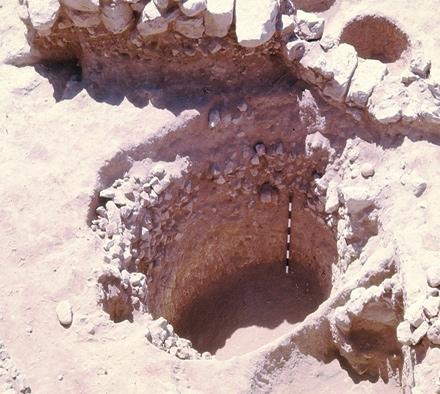- Local News
- Web-2021-04-14 | 02:55 pm

Nayrouz News Agency :
Cave dwelling was practised on a large scale in Sahab, located 12 kilometres southeast of Amman, during the Chalcolithic period and the beginning of the Early Bronze Age (4000 BC-3300 BC), noted a Jordanian archaeologist.
"In general, the caves were natural but were enlarged and adapted for human living and storage of goods,” said Professor Emeritus Moawiyah Ibrahim.
He said that stone walls were built as subdivisions and at the mouths of the caves.
Additional walls were added depending on the needs of the inhabitants in the various periods of the cave use, Ibrahim continued.
A few shreds were found with red shiny burnishing while some of the pottery showed the characteristics of the beginning of the Bronze Age, Ibrahim said, adding that a good number of the Chalcolithic shreds were found in caves as well as animal bones and flint implements that both require an additional study.
"Caves in Sahab were most likely inhabited at the same time as Gassulian [a culture typical for southern Levant between the Charcolithic and the Early Bronze Age] settlements,” Ibrahim said, noting that primitive wall structures of large and medium sized stones and the floors show that these caves were inhabited for long seasons.
The study of caves not only in Sahab but also on both banks of the Jordan River will help researchers study the social and economic structure of that period, he said
"This agricultural abundance is demonstrated by the large number of storage facilities both inside the houses and outside, in courtyards,” Ibrahim pointed out, adding that some of the courtyard storage structures were huge, measuring around four metres in diameter.
Furthermore, the way these storage pits are arranged within house units may suggest that large families were living in each quarter of the site, he explained, noting that architectural units consisted of several rooms (built of mostly unhewn stone) surrounding a courtyard in which large storage pits were cut into virgin soil and lined with small stones.
"Such units developed out of individual rooms, one added after the other,” he elaborated, adding that the deposits of this phase could be easily recognised and separated from each other when they were not disturbed by later construction.
"It is quite possible that inhabitants continued to live in caves even after the main Neolithic/Chalcolithic settlement was deserted or destroyed,” he said.








